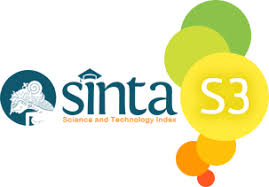Analysis of Islamic Youth Organization Leadership Style Mosque
 Abstract views: 223
,
Abstract views: 223
,
 PDF downloads: 144
PDF downloads: 144
Abstract
This research discusses how a leadership style in a mosque Islamic youth organization can create a conducive situation and be able to manage any conflicts that occur. This research uses Rensis Likert's theory of leadership style, namely, absolute rulers, semi-absolute rulers, advisors & invitees as well. This research uses descriptive qualitative research methods, where this approach aims to provide a comprehensive and in-depth view of the subject under study, namely leadership style & conflict management in an Islamic youth mosque in Serang City. By taking the locus of a mosque Islamic youth organization, the author tries to analyze how the leadership style is applied by the mosque's Islamic youth organization. The results of the research in this article indicate that the leadership style carried out by the chairman of Risma Masjid At-Taqwa is a participatory leadership style that always involves its members to make decisions so that joint decisions are created. In addition, the chairman of Risma also sometimes provides motivation, advice, or guidance to its members to be more enthusiastic about carrying out their duties. The communication that is carried out is also two-way communication, where there is reciprocity between members and the leader, the communication is also open and interactive.
References
Farida, A., & Ganiem, LM (2017). Leader's Motivation Language – A Study on Internal Communication at the National Library of Indonesia. Iski, II (02), 71–81.
Faules, RWP & DF (2015). Organizational Communication “Strategies to Improve Company Performance.” (Deddy Mulyana, Ed.) (Eight). Bandung: Rosdakarya Youth.
Hele, AP, & Maela, NFS (2018). Service Improvement Based on Organizational Communication Strategy at Luwu Hospital. Journal of Professional Communication, 2 (1), 39–54. https://doi.org/10.25139/jkp.v2i1.910
Helmayuni, Totok Haryanto, Siti Marlida, Rino Febrianno Boer, Saktisyahputra, Aminol Rosid Abdullah, Ichsan Adil Prayogi, Angelika Rosma, Nadiah Abidin, IS (2022). Introduction to Communication Science . CV. Literacy Nusantara Abadi (First). Malang: Archipelago Literacy.
Krisyantono, R. (2014). Practical Techniques of Communication Research. Jakarta: Prenada Media.
Moleong, LJ (2017). Qualitative Research Methods Revised Edition (Revised). Bandung: Rosdakarya Youth.
Prayogi, IA, Sjafirah, NA, Ariadne, E., Dewi, S., Padjadjaran, U., Organization, P., … Indonesia, P. (2019). INTERNAL CONFLICT MANAGEMENT IN ORGANIZATIONS. In A. Rusmana (Ed.), The Future of Organizational Communication In The Industrial Era 4.0 (pp. 459–464). Sumedang: ACCELERATION MEDIA ACCELERATION.
Quamila, A. (2021). Get to Know More in the Democratic Leadership Style and Its Characteristics. Retrieved May 21, 2022, from https://glints.com/id/lowongan/gaya-kepemimpan-demokratis/#.YfOw3PiyTDc
Robbins, SP (2017). Organizational Behavior. Jakarta: Four Salemba.
Ruliana, P. (2018). Organizational Communication "Theory & Case Studies (Second). Depok: Rajawali Pers.
Zacharias, T. (2019). Effectiveness of organizational communication at the education and culture department of Maluku province. Journal of Professional Communication , 3 (2), 92–116. https://doi.org/10.25139/jkp.v3i2.2002
Copyright (c) 2023 Jurnal Komunikasi Profesional

This work is licensed under a Creative Commons Attribution-ShareAlike 4.0 International License.

Jurnal Komunikasi Profesional is licensed under a Creative Commons Attribution-ShareAlike 4.0 International License.
1. Proposed Policy for Journals That Offer Open Access
Authors who publish with this journal agree to the following terms:
- Authors retain copyright and grant the journal right of first publication with the work simultaneously licensed under a Creative Commons Attribution License that allows others to share the work with an acknowledgment of the work's authorship and initial publication in this journal.
- Authors are able to enter into separate, additional contractual arrangements for the non-exclusive distribution of the journal's published version of the work (e.g., post it to an institutional repository or publish it in a book), with an acknowledgement of its initial publication in this journal.
- Authors are permitted and encouraged to post their work online (e.g., in institutional repositories or on their website) prior to and during the submission process, as it can lead to productive exchanges, as well as earlier and greater citation of published work (See The Effect of Open Access).
2. Proposed Policy for Journals That Offer Delayed Open Access
Authors who publish with this journal agree to the following terms:
- Authors retain copyright and grant the journal right of first publication, with the work [SPECIFY PERIOD OF TIME] after publication simultaneously licensed under a Creative Commons Attribution License that allows others to share the work with an acknowledgement of the work's authorship and initial publication in this journal.
- Authors are able to enter into separate, additional contractual arrangements for the non-exclusive distribution of the journal's published version of the work (e.g., post it to an institutional repository or publish it in a book), with an acknowledgement of its initial publication in this journal.
- Authors are permitted and encouraged to post their work online (e.g., in institutional repositories or on their website) prior to and during the submission process, as it can lead to productive exchanges, as well as earlier and greater citation of published work (See The Effect of Open Access).



